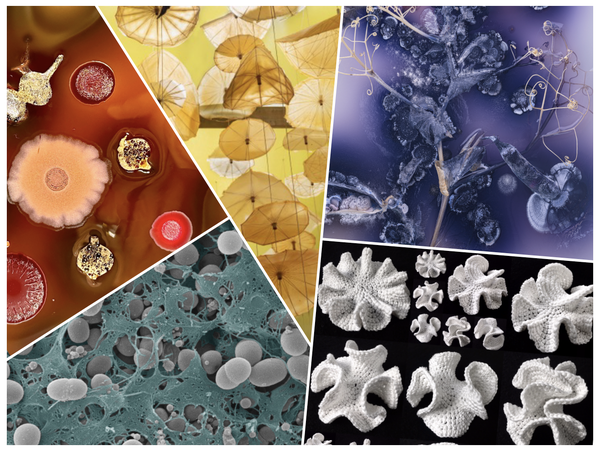Faculty of Biology - Department of Microbiology
Prof. Dr. Regine Hengge
Address Philippstraße 11-13,
10115 Berlin
Fax +49 30 209349681

From molecular signaling and regulation in bacterial stress responses and biofilms to human-curated plant-microbe interactions in traditional practices und contemporary art
In order to grow and survive in variable and often hostile environments, bacteria have evolved amazing adaptation mechanisms. These include complex stress responses and biofilm formation. Biofilms are multicellular aggregates embedded in a self-produced fibrous matrix that confers protection and tissue-like properties, which includes folding and wrinkling into complex macroscopic morphologies, when biofilms are grown as macrocolonies on agar plates. At the multicellular level, biofilms exhibit a complex microarchitecture based on differential gene expression in distinct zones and layers. Biofilms cause serious biomedical and technological problems, because within these structured aggregates bacteria tolerate antibiotics, disinfectants and attacks by our immune system, which results in chronic infections.
For several decades, research in the Hengge group has elucidated the fundamental signal transduction pathways and regulatory networks that underlie bacterial survival of starvation and other harsh stress conditions as well as the formation, microarchitecture and macroscopic morphogenesis of biofilms. As a model organism, mainly Escherichia coli has been used which includes commensals as well as important human pathogens. Special emphasis has been given to the biofilm-promoting bacterial signaling molecule cyclic-di-GMP, addressing questions such as how this intracellular second messenger is produced and degraded in response to a myriad of signals and how it triggers adaptive molecular and cellular responses. A fundamental outcome of this research was the finding that bacteria can use ‘local’ c-di-GMP signaling in parallel-operating pathways even in single cells. Given the causal role of biofilms in chronic infections, also anti-biofilm strategies and compounds have been studied in the context of natural plant-microbe interactions by which plants defend themselves against bacteria forming biofilms on their surfaces.
During this research, it has become apparent that many traditional practices can be understood as ‘human-curated plant-microbe interactions’, as illustrated by traditional plant-based medicine used to treat bacterial infections or traditional plant food fermentation. Within the framework of the Excellence Cluster Matters of Activity. Image Space Material [more infos], the Hengge group is thus investigating the crucial roles of soil bacteria and plant materials in traditional West-African fermentative textile dyeing [more infos]. In additional, bacterial cellulose – which bacteria make as an extracellular matrix material in pellicle biofilms as can be observed in Kombucha making – is explored as a self-growing material for innovative design applications, with plant matter serving as growth substrates or property modifiers during bacterial cellulose production [more infos].
Finally, complex plant-microbe interactions are also the basis of a cooperation between Prof. Hengge and artist Kathrin Linkersdorff, a long-term artist-in-residence in the Hengge laboratory [more infos]. In the project Microverse, the fully circular flow of matter in natural ecosystems, in particular in healthy soil, is visualized by growing the soil bacterium Streptomyces coelicolor on decolored and fully transparent dead plants, which seem to be blossoming again under the spell of the bacterial pigments in a living Theatrum naturae et artis.
